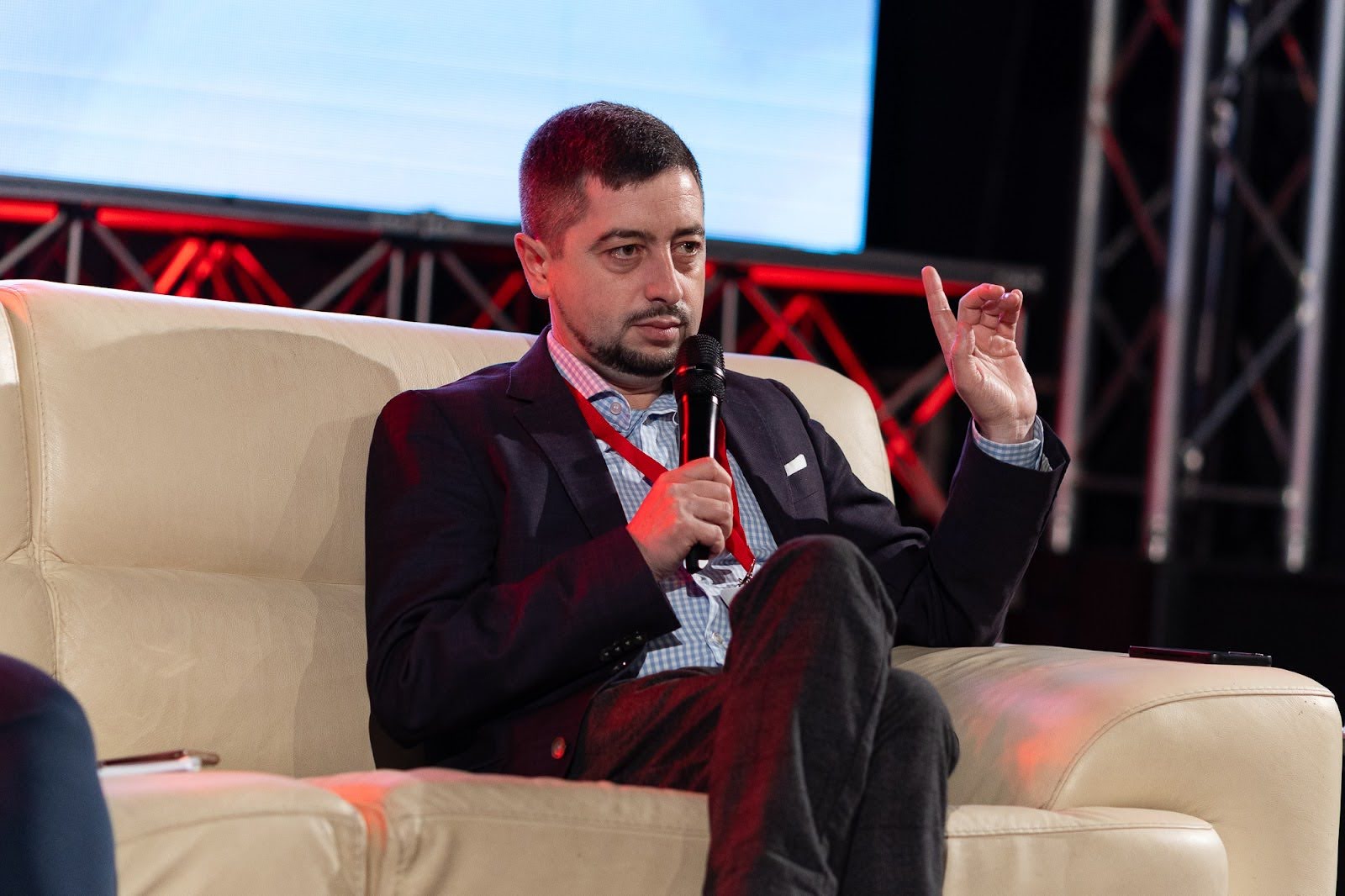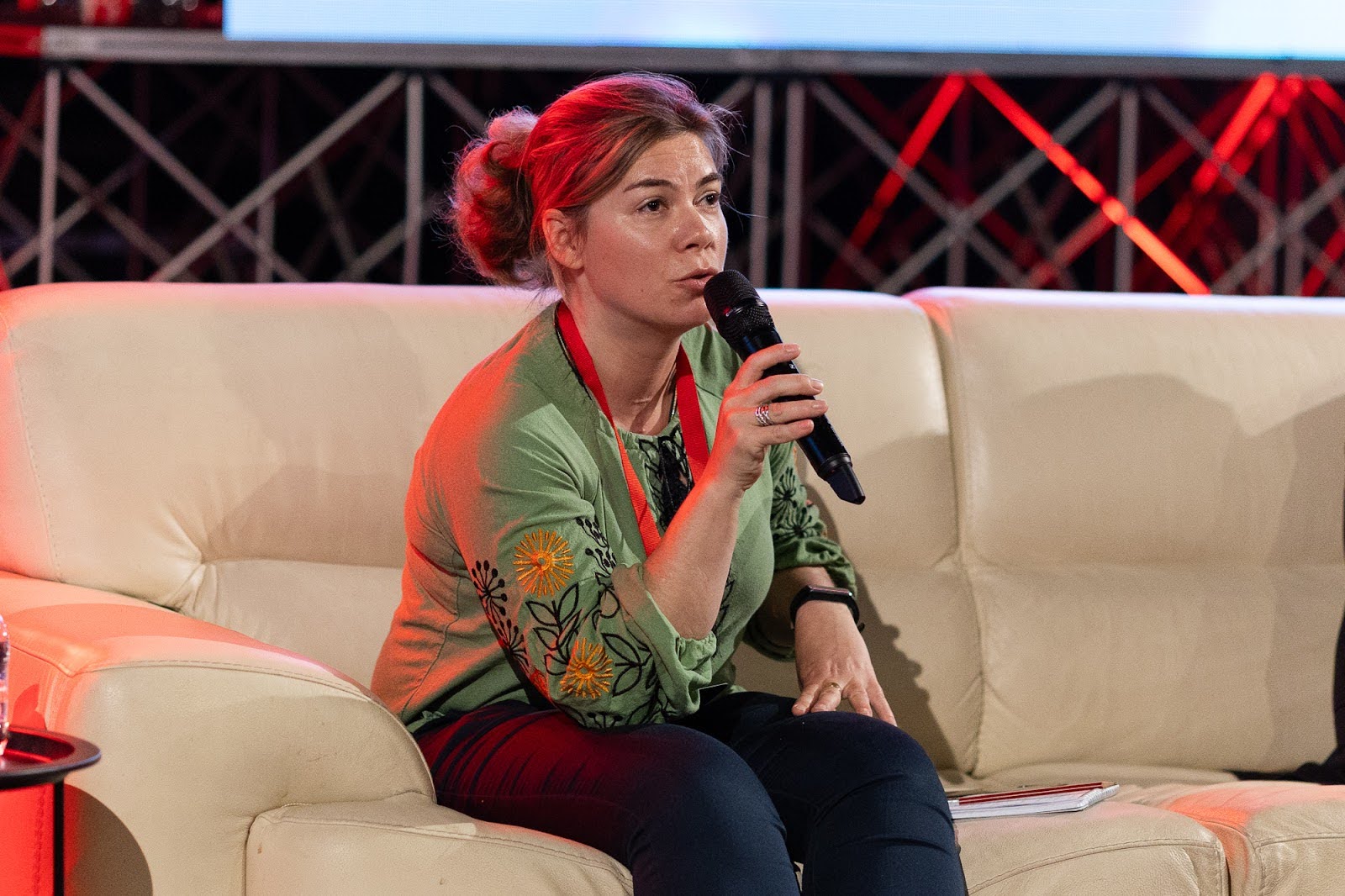The Fog of Information War: Russian Strategies in Bordering Nations
On Friday morning, the amphitheater of Dom mladih became a center of debate on disinformation and geopolitical influence, as leading voices gathered for the panel “The Fog of Information War: Russian Strategies in Bordering Nations”. The event, held in cooperation with the Unlock Festival and the Prague Civil Society Center, explored how Russia deploys media and information tactics to sway public opinion and destabilize neighboring countries.

Moderated by Iryna Domnenko, journalist and host of the Rakamakafo podcast, the panel brought together experts and activists including Babutsa Pataraia (Sapari, Georgia), Kateryna Shymkevych (Zaporizhzhia Institute of Economics and Information Technologies, Ukraine) and Valeriu Pașa (WatchDog.MD, Moldova).
Iryna opened the panel by briefly introducing the main topic, Russia’s strategy and the information environment surrounding it. She explained that the discussion would focus on how Russian narratives and tactics are playing out in different countries, especially in terms of their effectiveness and potential danger. To kick off the conversation, she asked the panelists to reflect on how Russia operates in their respective countries, how this connects to their daily work, and what specific themes or emotional triggers Russia tends to use.

Valeriu explained that Russia uses information and political tactics, not just traditional warfare to reach its goals. He said this isn’t just “hybrid war,” but something deeper, like political warfare, which aims to control people, governments, and influence society. Instead of using expensive military force, Russia often chooses cheaper, non-military methods like spreading fear, funding political proxies, and creating division. He gave the example of Moldova, where Russia has spent a lot of money to interfere politically. His main message was: Russia’s strategy is not just about war with weapons, but about winning influence and control through fear and manipulation and it works because it’s cheap and effective.
Babutsa spoke about how Russian-style propaganda and tactics are used in Georgia, especially to delegitimize civil society and divide people during critical times like elections.She emphasized that the last elections were stolen, and that people protested for over 180 days demanding fair ones. One of the main propaganda tools has been fear, especially fear of war, using images from Ukraine to scare Georgians. However, this fear only worked on a small part of the population that follows pro-Russian media. She also described how NGOs and activists have been under heavy attack through smear campaigns and strict new laws copied from Russia, such as labeling NGOs as “foreign agents.” Still, public trust in NGOs remains strong, especially when independent media started highlighting the real work of small, local organizations.

Kateryna, speaking as a historian, explained that Russia uses long-term, well-developed methods of influence, rooted in Soviet-era tactics, to target not only Ukraine but also other post-Soviet and even Western countries. She noted that Russia began preparing for war against Ukraine long before 2014, using hybrid strategies that were officially adopted in the early 2000s. These included provoking separatist conflicts in places like Moldova, Georgia, and eventually Ukraine and applying similar tactics in the Republika Srpska, Kosovo, Croatia, Macedonia and North Macedonia.

Kateryna emphasized that Russia tailors its strategy to each country, using historical myths, cultural tools, and societal frustrations to weaken national unity. In Ukraine, for example, it exploited public disappointment in politics and the economy to erode trust. She stressed that this strategy involves financing political actors, media, academia, and institutions over many years to identify and exploit weak points.
Author: Emina Kuštrić